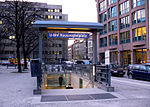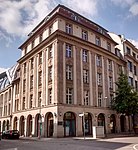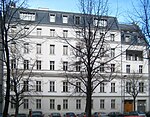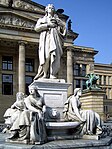Weierstrass Institute
1992 establishments in GermanyEducation in BerlinNon-profit organisations based in BerlinResearch institutes in GermanyScientific organizations established in 1992

The Weierstrass Institute for Applied Analysis and Stochastics (WIAS), is a part of the Forschungsverbund Berlin e.V. and a member of the Leibniz Association. Based in Berlin’s district Mitte, the institute's research activities involve applied and pure mathematics. Since February 2011, the International Mathematical Union (IMU) Secretariat has been located in Berlin at WIAS.
Excerpt from the Wikipedia article Weierstrass Institute (License: CC BY-SA 3.0, Authors, Images).Weierstrass Institute
Mohrenstraße, Berlin Mitte
Geographical coordinates (GPS) Address Nearby Places Show on map
Geographical coordinates (GPS)
| Latitude | Longitude |
|---|---|
| N 52.51261 ° | E 13.396084 ° |
Address
Mohrenstraße
10117 Berlin, Mitte
Germany
Open on Google Maps










